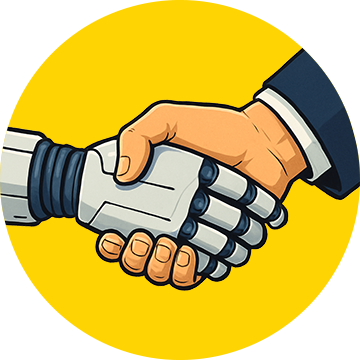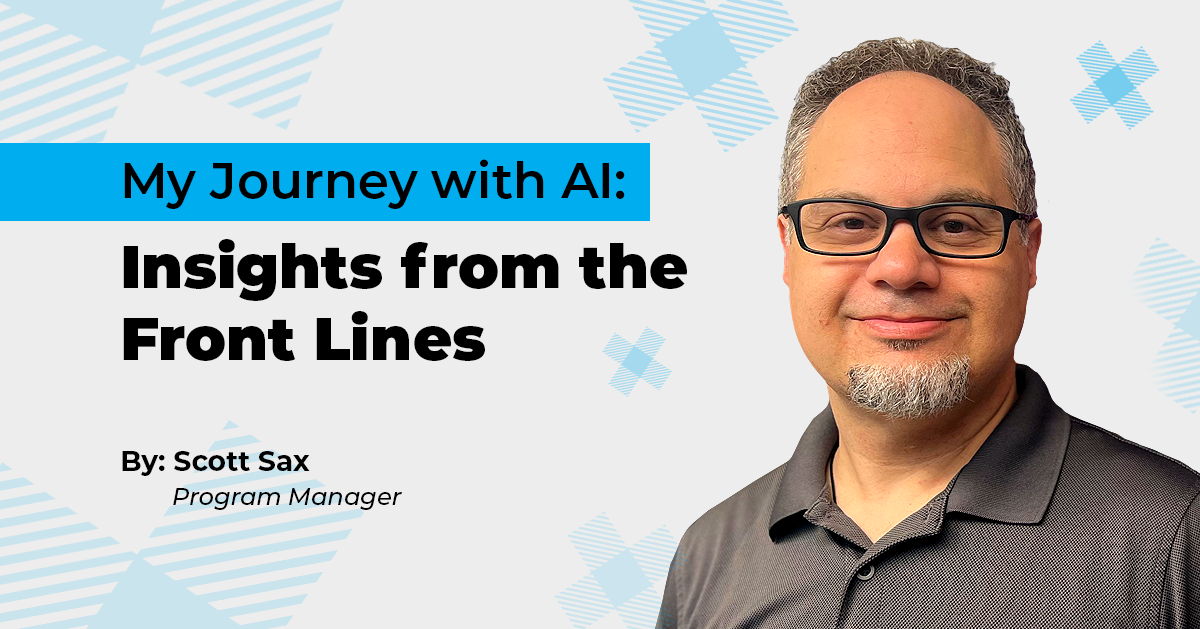
When I joined The Canton Group as a Group Product Manager, I knew I was stepping into a team that values both speed and precision. My role puts me at the crossroads of design, development, and delivery, where ideas become real and clients start seeing results.
Like a lot of people in product leadership, I’m constantly juggling priorities. I want our teams to move quickly, but never recklessly. I want prototypes fast, but only if they’re thoughtful. And I want to support newer developers, but not by handing them shortcuts that skip over important learning and fundamentals.
That’s where AI has started to make a real difference. Not because it replaces expertise, but because it helps make space for better ideas, faster feedback, and more meaningful collaboration. At The Canton Group, we use AI the same way we use every tool: with intention, oversight, and a strong belief that people are still the ones delivering the value.
Early on, I saw this in action. We had an idea for a new feature, something our client needed quickly, and instead of starting from scratch, I used Figma’s Make AI to build a few starting points. It wasn’t perfect, and it wasn’t supposed to be. But it gave our design team something tangible to react to. We reviewed it that afternoon, made a round of updates, and had something strong to share with the client within days.
That kind of speed didn’t happen because AI knew what to build. It happened because it helped us move past the blank page and get to meaningful conversations sooner. It created space for better thinking, not shortcuts.
Beyond design, AI supports momentum across our development work too. We use Copilot in Azure DevOps, and while it’s not writing production-ready code, it is a great support tool, especially for junior developers. It can surface patterns, suggest tests, and help overcome those stuck moments. Our senior devs still review every line before anything moves forward, but Copilot adds a helpful voice when someone needs a nudge.
Then there’s ChatGPT. I use it almost daily to clarify requirements, rewrite technical content into plain language, and pressure-test user stories. I’ve also built a few lightweight agents to automate things like formatting tickets or summarizing updates. These small efficiencies give our team more room to focus on creative problem-solving.
My rule is simple: if a task is tedious and repeatable, I let AI take the first pass. If it affects user experience, risk, or strategy, it stays firmly in human hands.

That said, we treat AI with caution. We don’t input sensitive client data. Every AI-generated draft is reviewed the same way as anything written by a team member. If something doesn’t make sense, we question it. Just like any tool, AI is only as useful as your ability to ask the right questions and apply good judgment.
What I’ve learned is that AI doesn’t have to be revolutionary to be valuable. It just needs to be thoughtfully applied. For product leaders, that means identifying friction points and using AI to smooth them out, not to skip over the work, but to support it. Whether it’s prototyping faster, improving communication, or giving your team more time to think creatively, it’s about getting to better outcomes without losing what makes the process human.
At the end of the day, it’s not about the tools. It’s about the people using them. The strongest ideas come from real collaboration. The best products are built by teams who care deeply about outcomes. And the real value of AI comes from how it helps us focus more on what matters—thinking creatively, solving problems, and delivering meaningful results.

Ready to Explore What AI Could Do for You?
At The Canton Group, we’re not just talking about AI, we’re putting it into practice across government, enterprise, and public sector projects. Whether you’re curious about where to begin, need help identifying use cases, or want to scale your current efforts, we’re here to help.
Let’s talk about how we can bring AI-powered innovation to your organization.






